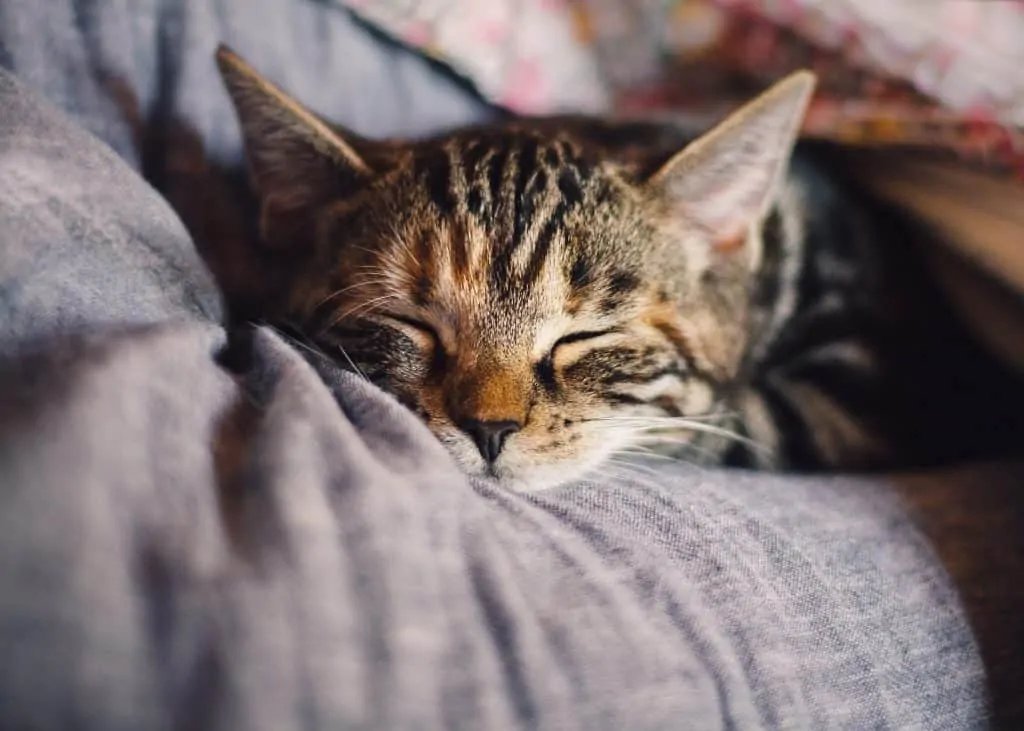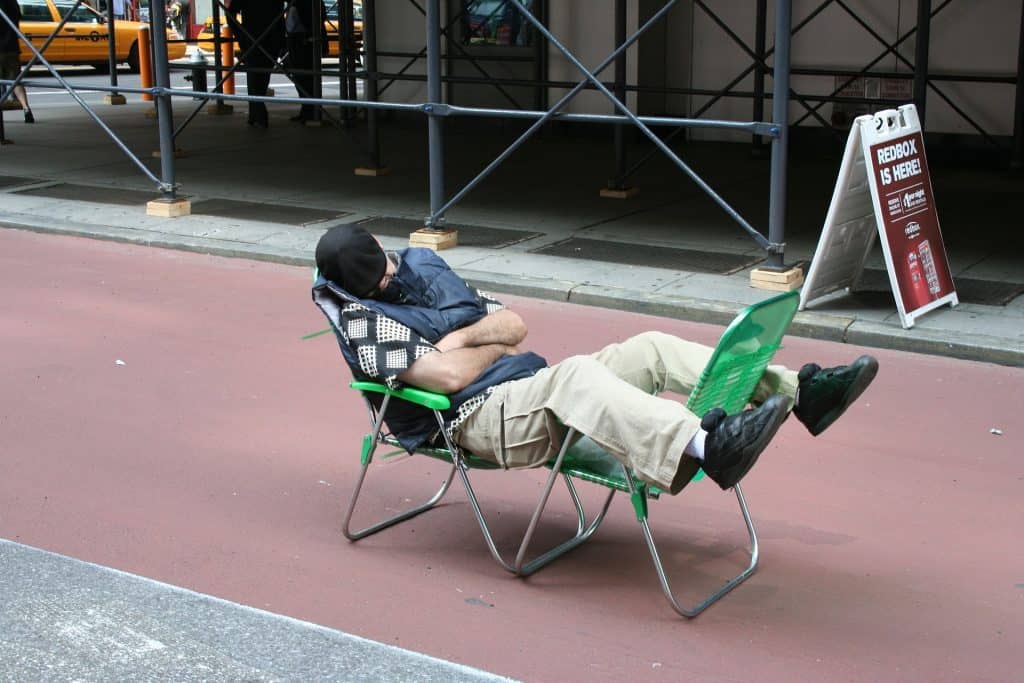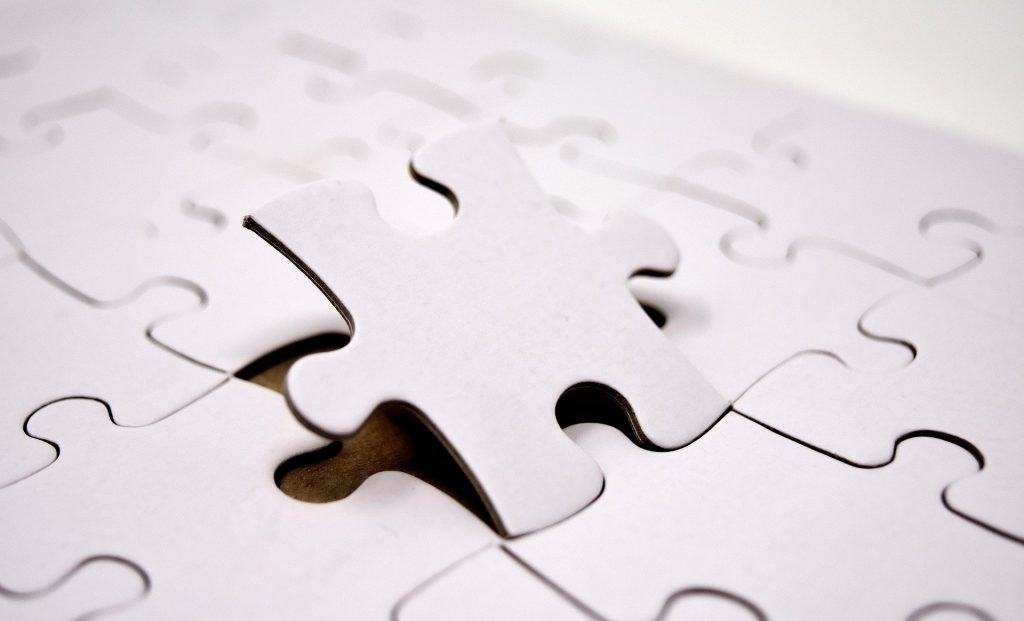
The science of sleep is one of the biggest mysteries in the world. If you think about it, sleep is kind of like a preview of death – no one can fully describe the experience. Although sleep research is a fairly new field, its findings have helped us understand this phenomenon more. Take a closer look at what happens to your body through these sleep facts.
- You spend ⅓ of your life sleeping.
- The average person dreams 4-6 times per night.
- About 50-70 million US adults suffer sleep disorders.
- Adults need 7-8 hours of sleep per night to function properly.
- There are 5 stages of sleep.
- The sleep cycle has 2 different types: non-Rapid Eye Movement (non-REM) and Rapid Eye Movement (REM) sleep.
- Non-REM sleep lasts 4 stages.
- REM is the last stage of sleep and is also known as the dreaming stage.
- Humans secrete growth hormones during slow-wave sleep.
- Sleep is essential because it replenishes the muscular, skeletal, nervous, and immune systems.
- Sleep increases a person’s sensory threshold, making them less respondent to stimuli.
- Sleep disorders are divided into 2 types.
- Parasomnias are sleeping disorders that involve abnormal movements or behaviors such as sleepwalking.
- Dyssomnias are characterized by difficulty falling or staying asleep, as well as oversleeping.
- In 1913, Henri Pieron published “Le probleme physiologique du sommeil,” which was the first book to examine sleep physiologically.
- Humans forget 95-99% of their dreams by morning.
- Babies need to sleep 12-16 hours per day.
- Falling asleep usually takes 10-15 minutes.
- Sleep deprivation causes 100 thousand deaths by medical error.
- The recommended sleeping hours decrease with age.
Sleep cleanses your brain.
When we sleep, cerebrospinal fluid flushes through the brain to wash away the day’s worth of harmful, excess proteins and toxins. Think about that on your next Netflix binge.

Talking in your sleep is known as somniloquy.
Sleep talking is scientifically known as somniloquy. Much like sleepwalking and sleep paralysis, it is a parasomnia. It’s not really a serious condition, but it can be treated and avoided.
Light affects your sleeping habits.
Our body clock is also known as Circadian rhythm. This internal clock primarily responds to light cues. It creates more melatonin at night, and less when it senses light in the morning.
Thus, exposure to light late at night and dark environments in the morning can throw off a person’s circadian rhythm. Because of the reversed cues, the body tends to reverse the melanin production needed to sleep. There’s one for sleep facts that’ll explain your messed-up body clock.
The fear of sleep is called somniphobia.
Somniphobia or hypnophobia refers to the irrational fear and severe panic towards falling asleep and dreaming. Usually, a person develops somniphobia due to post-traumatic stress. However, this phobia may also develop in people who have associated traumatic experiences with sleeping.
The sudden feeling of falling while you sleep is called a myoclonic jerk.
It sounds more like an insult, but I’m sure we’ve all experienced being startled awake by a falling sensation. Scientifically, there is still no explanation for why we get myoclonic jerks. However, anxiety, caffeine and physical activity close to bedtime makes a myoclonic jerk more likely. They are also more frequent in younger people.
A snail can sleep for three years.
Aside from their shocking number of teeth, these small critters have some more astonishing tricks up their sleeve. Nap time for a snail can last from a few hours up to 3 years.
The University of Chicago conducted the first ever sleep study.
In 1925, Nathaniel Kleitman opened the world’s first sleep laboratory at the University of Chicago. Dubbed the Father of American Sleep Research, Dr. Kleitman eventually discovered rapid eye movement (REM) with his student, Dr. Eugene Aserinsky.
Now, sleep studies are known as polysomnography. These sleep studies record a patient’s vitals and brain waves throughout their slumber, and are used to diagnose sleep disorders.
In Japan, napping at work is honorable.
In Japan, napping at your job is seen as a sign of diligence—you worked so much to the point of exhaustion. The Japanese call it inemuri, which translates to “present while sleeping.”
Cats spend ⅔ of their lives asleep.
People have a love-hate relationship with cats. It’s somewhat understandable, since cats tend to be the exact opposite of the warm, eager demeanor loved by many in dogs. Another stark difference is that cats spend a lot of time asleep. Like, a 15-hour average kind of a lot.
Now, why do cats sleep so much? Cats sleep for a majority of the day because they are crepuscular creatures. This means that they are only active during twilight and doze off for the rest of the day.

Sleep deprivation can have the same effects as alcohol.
Putting off sleep for 16 hours can make you act like a person with the blood alcohol level of .05%.
Sleep masks trick our body clocks.
Wearing sleep masks obstructs light from our senses, which aids in the production of enough melatonin to fall asleep.
Before the 1800s, people slept in batches.
Before, people had a “first” and “second sleep.” Towards the evening, they would sleep for 3-4 hours, wake for 2-3 hours to do some activities, then go back to sleep until morning.
Sleep is a constant cycle.
Although we say that we “slept through the night,” sleep isn’t a stagnant process. instead, you cycle through the stages of sleep throughout the night in 90-minute intervals.
People don’t sneeze in their sleep.
While asleep, humans are actually more prone to sneezing because the mucous membranes swell when lying down. However, the brain shuts down the neuroreceptors that stimulate our sneezing reflex. That way, only very strong stimuli can wake one to sneeze.
People born blind often have difficulty falling asleep.
For people with no way to perceive light, their circadian rhythm (internal clock) is unable to distinguish a day and night cycle.
The U.S. celebrates National Nap Day on March 9th.
Boston University professor William Anthony Ph.D created National Nap Day with his wife Camille Anthony in 1999. The couple established this holiday to promote sufficient sleeping habits. It’s set after daylight savings, since people are most tired after the hour changes.
Lack of sleep costs the U.S. over $411 Billion per year.
According to a study, sleep deprivation in the U.S. workforce costs $411 billion in productivity. Overall, the resulting lack of productivity shaves 1.2 million working days annually.
Hawaii has the shortest sleep duration of all U.S. states.
With only 54% of its population getting the recommended sleep duration, Hawaii ranks first in the most sleep-deprived U.S. states. Meanwhile, South Dakota has the highest proportion of adequate sleepers at 72% of its population. There’s one for sleep facts you didn’t expect.
The best sleep music matches a person’s BPM while falling asleep.
A Hong Kong study found that participants who listened to music 30-45 minutes before bedtime had better sleeping conditions. Over a course of 3 months, the participants fell asleep quicker, slept deeper, and felt better in the morning.
The magic trick lies in the selected songs’ BPM, which all ranged from 60-80 BPM. This range emulates the average person’s heart rate as they fall asleep. Now that’s one for sleep facts you’d want to try yourself.

The world record for the longest period without sleep is 11 days.
Californian student Randy Gardner set the world record for the longest time without sleep in 1964 at approximately 264 hours. However, health specialists highly discourage from attempting this. Within 3 to 4 days without sleep, you may start having hallucinations. Sleep is a biological function for a reason – it is not advisable to pull all-nighters all the time.
Insects sleep, too.
Most insects only stay active during the day or nighttime. Once insects rest, they enter a state called torpor. It’s not exactly how sleep is for humans, but it’s similar in the way that it lessens response to minor stimuli.
Sleeping on your stomach can help with digestion.
Sleeping in a “freefall” position has been linked to lessening heartburn. How’s that for cool sleep facts?
Humans are the only mammals that willingly delay sleep.
Every other mammal in the animal kingdom will succumb to sleep once they feel exhausted. However, humans can “fight” against sleep for a certain period.
Sleep deprivation kills faster than starvation.
The human body can go for three weeks without food, but the highest record for surviving days without sleep is currently 11 days. Sleep deprivation impacts essential bodily processes that keep us alive. In a way, it causes the body to “shut down.” A 1989 sleep study conducted on rats showed that they succumbed to sepsis after 32 days of no sleep.
Whales and dolphins never fall asleep fully.
Instead, one half of their brain stays awake so they can still breathe through the surface.
High altitudes affect sleep.
The higher the altitude, the more it disrupts sleep. Usually, sleep disturbance occurs at altitudes of 13,200 ft or more. Experts point to reduced oxygen levels and altered air pressure as the main cause of sleep disturbances at these altitudes. Acclimation to high altitudes usually takes two to three weeks.
Difficulty in getting up in the morning is a real condition called dysania.
Dysania is not fully recognized as a formal condition yet, medical professionals still acknowledge its occurrence. This sleep disorder is typically associated with serious mental health conditions such as depression.
Not sleeping makes you hungry.
You know you’re hungry when the stomach secretes a hormone called ghrelin that sends hunger signals to the brain. Sleep deprivation causes larger production of ghrelin, which increases the chances of midnight snacking. Changes in leptin levels also makes you more prone to binge eat.
Sleeping in public is totally cool in Japan.
Sleeping in public is a norm in Japan. You are extremely unlikely to get robbed if you fall asleep in public, since it’s already a part of everyone’s culture.

Chickens dream.
Chickens have been shown to experience the rapid eye movement (REM) cycle in their sleep.
A baby can cost new parents 750 hours of sleep.
For first-time parents, having a baby can remove 750 hours from their usual total sleeping hours for an entire year.
Watching TV burns more calories than sleeping.
But it’s not by a lot. Watching TV only burns 10% more calories than sleep.
Bears don’t poop during hibernation.
You might wonder, “How do animals keep in their poop when they hibernate?” Before an animal goes into hibernation, they will eat a lot to sustain them until they wake. So, where does all the food go? Bears keep their food in by eating grass and twigs, creating a plug or stopper in their bowels. With this stopper, they can sleep continuously without having to poop. However, once they wake up, it all comes out.
Back in Medieval Times, bedrooms weren’t private.
Aside from absurd, ominous art, we can all agree that the Medieval Ages was a weird time. During this period, beds were placed in areas where guests could see them. Usually, beds would be placed by a window, so passersby can admire whoever is sleeping. Sounds like something out of a thriller movie by today’s standards.
Full moons have been linked to difficulty sleeping.
Even in sleep labs’ windowless rooms that don’t have environmental and time-based cues, full moons have been observed shortening and disturbing sleep cycles. To this day, it remains unexplained by science.
Oversleeping is an actual disorder called hypersomnia.
For people who suffer from hypersomnia, oversleeping is actually a medical disorder. A person with hypersomnia suffers extreme sleepiness throughout the day, regardless of napping. Hypersomniacs also sleep for unusually long periods at night.
Around 8% of people have reported ‘sleep sex.’
Sexsomnia is a phenomenon where two or more people have sex unconsciously. There has yet to be a scientific explanation for sexsomnia, but experts suggest unfulfilled sexual frustration and dreams about sex as the usual culprits.
Regular exercise helps you sleep.
One of the sleep facts to consider in your daily routine: Exercising regularly has been proven to help with falling (and staying) asleep. However, exercising erratically or immediately before bedtime can mess with your body clock.
Sleep improves your memory.
Sleep-deprived individuals have been shown to score lower on short-term memory tests compared to those who had a good night’s sleep. Definitely one of the sleep facts to remember.

Athletes need more sleep.
Due to heavier physical activity, athletes may need up to 10 hours of sleep to repair their muscles and replenish their energy.
Flat-faced dogs are prone to sleep apnea.
Sleep apnea is a potentially serious sleep disorder characterized by periodic stops in breathing. Snoring loudly and feeling exhausted after a night’s sleep usually indicate sleep apnea. Because of their facial structure, flat-faced dogs such as pugs and bulldogs are more prone to developing sleep apnea later in life.
Over 100 million people suffer from sleep apnea worldwide.
Sleep apnea often requires treatment at sleep centers. For obstructive sleep apnea, doctors administer a continuous positive airway pressure device (CPAP) to the patient. The CPAP is a mask fitted over the nose/mouth that gently blows air into the airway to keep it open during sleep.
Getting enough sleep can curb unhealthy eating habits.
Sufficient sleeping hours helps regulate the hormones that control your appetite. If you get the right amount of sleep, you’ll tend to eat fewer calories overall.
Dying in your sleep is an actual medical condition.
Sudden arrhythmic death syndrome (SADS) is the sudden, unexplained death of adolescents and adults in their sleep. However scary that may seem, this condition is very rare.
You can sleep with your eyes open.
Although a person typically closes their eyes to hinder light, there are still some instances where a person can fall asleep with their eyes open.
The faces you see in your sleep are real.
The brain can’t create a made-up face for your dreams. Technically, each person you see in your dreams is someone you’ve already encountered in your waking life. How’s that for sleep facts?
A person grows .3 inches while sleeping.
However, they will shrink down to normal once gravity pushes against their bones when they wake.
Our brains stay active when we sleep.
The ancient Greeks once believed that sleep is a completely passive process which shuts down the brain. However, some parts of the brain work harder when we’re asleep compared to our waking hours.
Women need more sleep than men.
According to a U.K. study, women need 20 more minutes of sleep than men. The researcher attributed women’s tendency to multi-task and use more parts of their brain as the reason for the additional time needed. Now that’s one for interesting sleep facts.
Mental illness is the most common cause of insomnia.
Anxiety, stress, and depression are the most common causes of chronic insomnia. However, other circumstances such as recent medical procedures and pharmaceutical side effects also cause it.

Was this page helpful?
Our commitment to delivering trustworthy and engaging content is at the heart of what we do. Each fact on our site is contributed by real users like you, bringing a wealth of diverse insights and information. To ensure the highest standards of accuracy and reliability, our dedicated editors meticulously review each submission. This process guarantees that the facts we share are not only fascinating but also credible. Trust in our commitment to quality and authenticity as you explore and learn with us.
